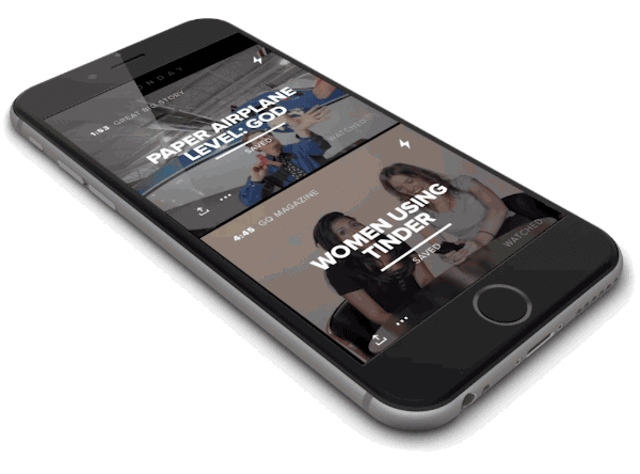Hyper Brings An Adless Video Digest To Your Smartphone
In today’s war for online content, video is the weapon of choice. The Berlin-based app Hyper launched on iPad last fall to deliver a simple, pure video experience: a curated selection of 12 short videos delivered to users every day. After getting acquired by Mic last month, they’re launching a new, sleeker version for iOS on June 30. The big question is, do mobile users like video enough to let strangers pick their content for them?

To its credit, Hyper’s smartphone version is pretty no-fuss: It pares its daily selection down to 10 videos presented in a clean vertical list. Aside from asking users to pick content preference from four categories (tech, global news, pop culture, fun), there’s no other customization. As in the older iPad version, the app banks its reputation on the quality and relevance of content it culls from the Internet. Like all apps betting on discovery to delight users, Hyper will live or die based on whether it can satisfy its users’ desire for good content they haven’t seen elsewhere.
Hyper’s other big bet is to make consuming video as seamless as possible, with the audacious aim to eliminate both buffering and ads. With those out of the way, Hyper’s video experience is noticeably streamlined in comparison to your typical in-browser watching experience. Start, stop, rewind, close one video and open another, all without interruption: Surfing around the prelaunch version of Hyper worked as promised, like shifting between songs on iTunes instead of streaming multimedia from different sources.

“There were three things we wanted to solve: no more searching, no more loading, and for the interaction to work for you right out of the gate,” says Hyper CEO and founder Markus Gilles. “Being appreciative of the aesthetics with filmmaking, we found that everything out there in terms of ads and user interface was pretty clunky. Nothing lived up to the stuff we wanted to showcase.”
To keep it flowing past launch, Hyper is partnering with video providers, an arrangement that will keep videos ad free, at least for now. The partners they’ve officially announced include Condé Nast Entertainment, Vogue, GQ, The New Yorker, and Wired. Most videos sit within a three- to six-minute sweet spot, says Gilles, though they make exceptions.
Note that actual people are making those exceptions, as Hyper’s videos are handpicked by employees. It’s a gamble to rely on a workforce of journalists and filmmakers who are “paid to binge-watch short-form content all day,” as Gilles puts it, but that allows a unified aesthetic tone that algorithms can’t yet imitate. Plus, it allows the team to pluck obscure videos from the corners of the Internet and spotlight unknown creators. This is part of Hyper’s plan to diversify its content and shift its dependence away from big-house media providers (even parent company Mic will only contribute a few videos per week). By year’s end, they want 50% of their videos to come from independent filmmakers from all over the globe.

Like podcast apps, users can set Hyper to download videos via Wi-Fi automatically the night before. While that locks up almost 500MB of storage space, it avoids data drain of streaming on the go and lets you watch in areas without a strong signal. Unfortunately, Android users will likely have to wait until the first quarter of 2017 to try it out, says Gilles. Starting on iOS let the Hyper team refine the video-watching experience in a more controlled device environment.
In the future, Hyper will find more innovative monetization options than pre-roll ads, says Gilles: A likely option will be a more robust offline package for a subscription fee of under $5 per month. The rest is up for debate as they negotiate with potential content partners, but one thing they don’t have to worry about is getting bought, since Mic acquired Hyper in May. The deal gives the millennial publishing site a foothold in video while letting the startup focus on scooping up unique content.
Fast Company , Read Full Story
(16)



